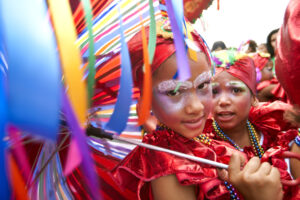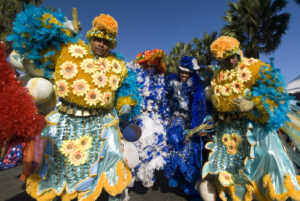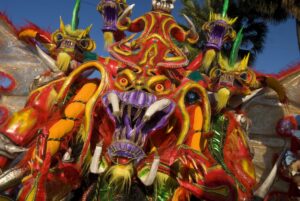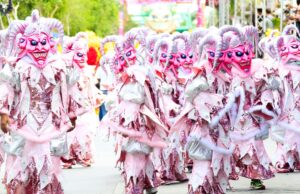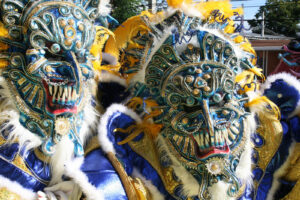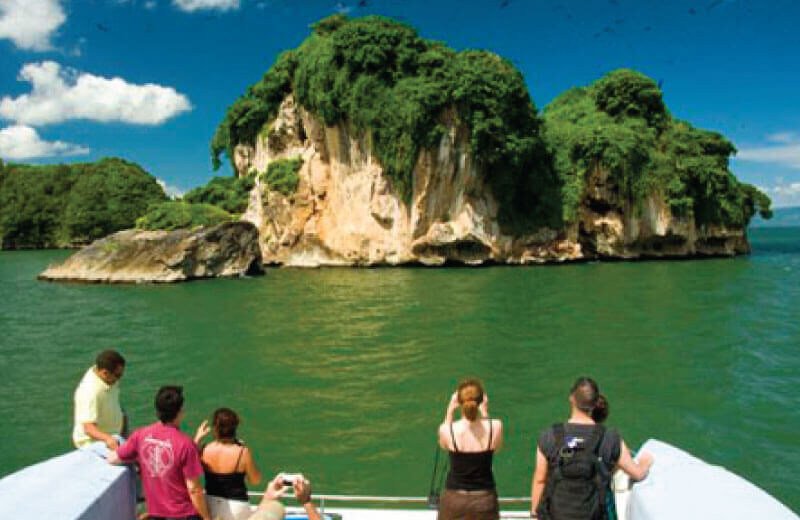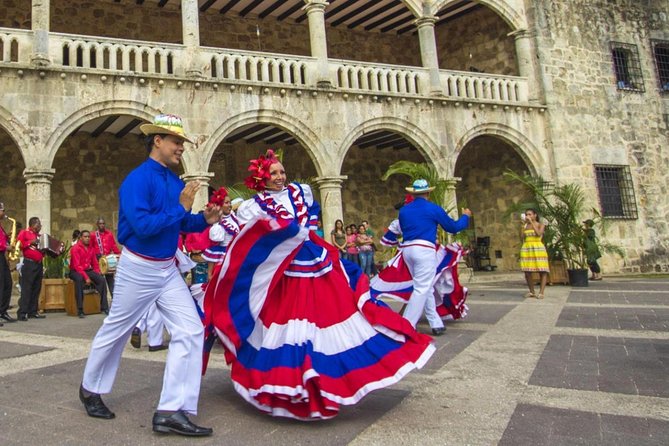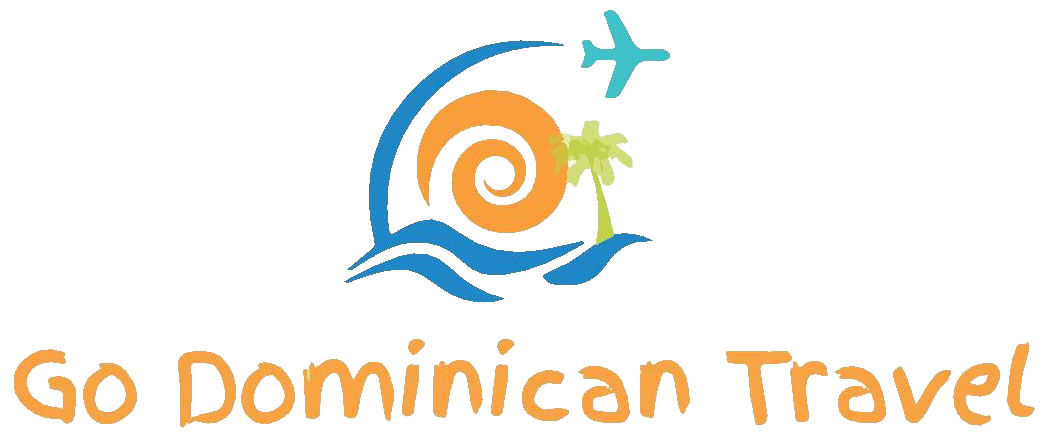ORIGIN & HISTORY
Carnival in the Dominican Republic dates back to 1520, during the Spanish colonial times. Some researchers say the first carnival events took place as a celebration of a visit by Fray Bartolomé de las Casas, when inhabitants disguised themselves as Moors and Christians.
Between 1822 and 1844, the tradition of wearing costumes during religious festivities almost disappeared during the Haitian occupation. But it returned immediately when the country achieved its independence on February 27, 1844. Costumes were then no longer associated with religious celebrations, and evolved into actual carnivals, celebrated during the three days prior to Ash Wednesday. February was then established as the month of carnival in the Dominican Republic.
CHARACTERS
To fully enjoy and understand Dominican carnival, familiarize yourself with the main characters, and their significance in Dominican folklore.
El Diablo Cojuelo is carnival’s leading character. This “limping devil” wears a colorful cloaked suit adorned with small mirrors, rattles, ribbons, and cowbells, as a parody of Spanish medieval knights. A mask with large horns covers the devil’s face, as he carries a round whip or vejiga–made from a cow’s dried and cured inflated bladder–and goes along the parade route surprising distracted onlookers with a lash on their buttocks.
Roba La Gallina, or “the hen robber,” is a man dressed up in an extravagant, layered dress, with large-sized breasts and exaggerated posterior, and carrying an oversized purse. She parades in the streets with an open parasol, stopping at the “colmados” or bodegas begging for his chicks–the town’s young people–who follow along behind him in the parade.
Los Lechones are the city of Santiago’s main carnival character, and are also a form of limping devil. They distinguish themselves with their masks–representing the face of a pig, with a long snout and tall horns–and their elaborate costumes featuring a colorful, beaded romper encrusted with bells and bows. Their role is to maintain order in the streets during festivities, which they attempt by swinging their fouet in the air.
Los Taimáscaros are Puerto Plata’s main carnival characters. They are a version of the diablo cojuelo, mixing three cultural influences in their outfits: a mask to represent the Taino gods, blouses and coats representing Spanish heritage, and handkerchiefs that symbolize African deities.
Guloyas are from San Pedro de Macorís, and their striking beaded costumes and tall feathery hats are impossible to miss. They represent Afro-descendants from neighboring English-speaking Caribbean islands who migrated to the DR in the early 20th century to work in the sugar industry. Their unique African-influenced music and dance was proclaimed a UNESCO Masterpiece of Intangible and Oral Heritage of Humanity in 2005.
Los Pintaos –from Barahona–parade in intricately painted bodies in various colors, from head to toe, with just a piece of cloth covering their nakedness. They represent the Maroons–escaped slaves who took refuge in the southwestern mountains of Bahoruco in the 16th century.
Los Tiznaos, also known as Los Africanos or the Africans, are characters whose faces and bodies are painted black with coal and burned car oil. They portray enslaved Africans, and dance along the streets.
Los Alí Babá is a group with Oriental themes, known for performing choreographed dancing and drumming.

